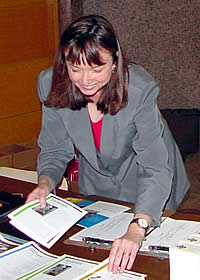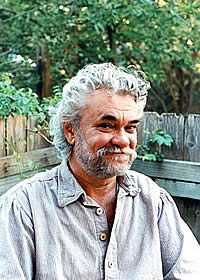Credits & Sources
Mark Parsons' ancestors had been in Texas since before the Texas Revolution, but his parents cheated him of native Texan-hood by stepping across the border into New Mexico, where he was born in Portales in 1941. After brief stays in Oklahoma and Floyd County, Texas, his family moved to Dickens County, where he entered a rural school in 1946 and moved to Spur schools in 1949. He graduated from Spur High School in 1958 and entered Texas Tech, transferring in 1960 to the University of Texas at Austin, where he eventually took a B.A. and M.A. in anthropology.
Early reading stimulated Mark's interest in Native American culture, and he collected artifacts from sites on and near the family farm beginning when he was eight years old and through his school days. By the time he was 13 he knew he wanted to be an archeologist, and at 19 he began his professional career under the tutelage of Ed Jelks at the Texas Archeological Salvage Project at the University of Texas. Through the years he has worked for Texas Memorial Museum, Texas Parks and Wildlife Department, Southern Methodist University, Texas Historical Commission, and several private archeological contracting firms. Special interests include replication of "primitive" technologies and interpretation of prehistoric artistic traditions. As Texas Historical Commission archeologist for the Forest Trails Region, his most recent work focuses primarily on the prehistoric and historic culture of the Caddo peoples of East Texas and adjacent states.
A number of other individuals and organizations contributed to the exhibit. Cecile Elkins Carter, Caddo historian and Cultural Liaison for the Caddo Tribe of Oklahoma, reviewed the draft and provided numerous helpful comments. Roland Pantermuehl of the THC provided graphics used in the exhibit, and Bill Pierson, also of the THC, took many of the artifact photographs.
The Oklahoma Arts Council provided the audiotape and book, Remaining Ourselves (listed below) for the audioclips. Additional recordings of Lowell Edmonds, Sr., were made by Dayna Bowker Lee for "Oral Traditions of Caddo Removal and Relocation," presented at the 38th Caddo Conference, Natchitoches, Louisiana. The Caddo songs were translated by Edmonds and Dr. Alice Anderton.
Print Sources
Carter, Cecile Elkins
1995 Caddo Indians: Where We Come From. University of Oklahoma
Press, Norman.
Dorsey, George A.
1905 Traditions of the Caddo. Carnegie Institution of Washington
Publication 41. Washington, D.C.
Flores, Dan L. (editor)
1984 Jefferson and Southwestern Exploration: The Freeman and Custis
Accounts of the Red River Expedition of 1806. University of Oklahoma
Press, Norman.
La Vere, David
1998 The Caddo Chiefdoms: Caddo Economics and Politics, 700-1835.
University of Nebraska Press, Lincoln.
Lee, Dayna Bowker
1995 Remaining Ourselves: Music and Tribal Memory; Traditional Music
in Contemporary Communities. State Arts Council of Oklahoma, Oklahoma
City.
Newkumet, Vynola B., and Howard L. Meredith
1998 Hasinai: A Traditional History of the Caddo Confederacy. Texas
A&M University Press, College Station.
Parsons, Elsie Clews
1941 Notes on the Caddo. Memoirs of the American Anthropological
Association, No. 57. American Anthropological Association, Menasha, Wisconsin.
Parsons, Mark L., James E. Bruseth, Jacques Bagur, S.
Eileen Goldborer, and Claude McCrocklin
2002 Finding Sha'chahdínnih (Timber Hill): The Last Village
of the Kadohadacho in the Caddo Homeland. Archeological Reports Series
3, Texas Historical Commission.
Perttula, Timothy K.
1992 "The Caddo Nation": Archaeological and Historical Perspectives.
University of Texas Press, Austin.
Swanton, John R.
1942 Source Material on the History and Ethnology of the Caddo Indians.
Smithsonian Institution, Bureau of American Ethnology, Bulletin 132. Washington,
D.C.
Links
Tejas: Life and Times of the Caddo
This special exhibit on TBH provides an intimate look at the Caddo's long and distinguished history, at ancient and living Caddo tradition, and at the tribe's many contributions to the cultural heritage of Texas, Louisiana, Arkansas, and Oklahoma. The Tejas exhibits explain who the Caddo are, who they were, where they came from, and what Caddo life was like in different points in time.
https://mycaddonation.com/
Official website of the Caddo Nation in Binger, Oklahoma.
https://www.si.edu/siasc/naa
National Anthropological Archives, Smithsonian Institution. A treasure
trove of photographs and manuscripts documenting American history.
https://dc.library.okstate.edu/digital/collection/kapplers/id/26273
A transcribed and indexed version of the Treaty of Cession of 1835, Digital Collections, Oklahoma State University.

